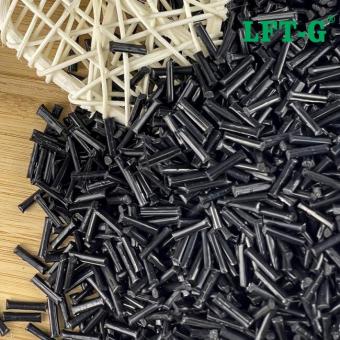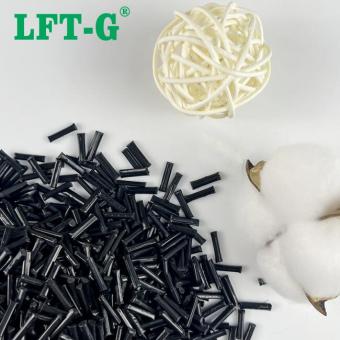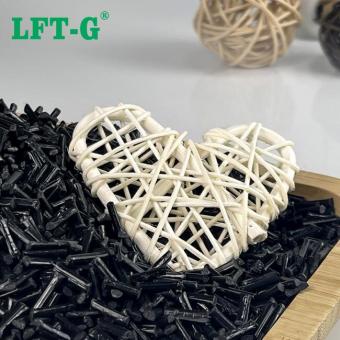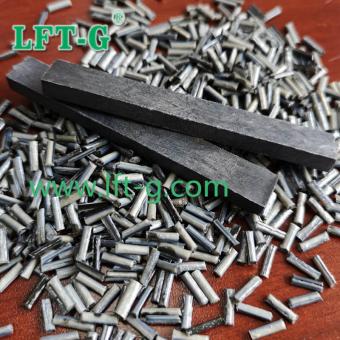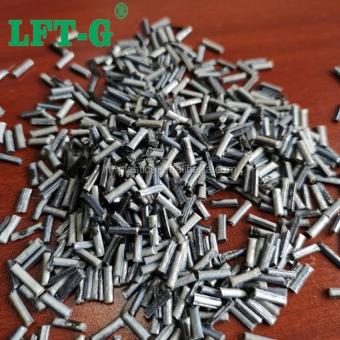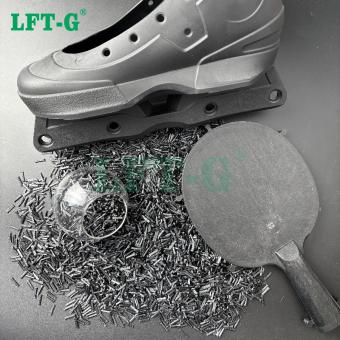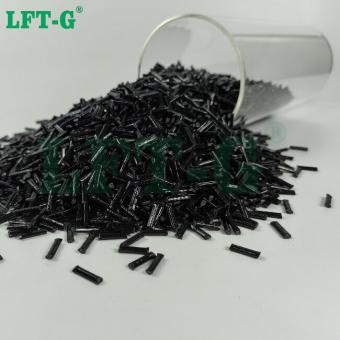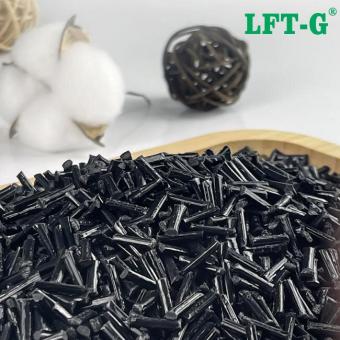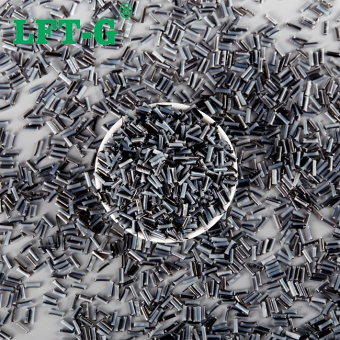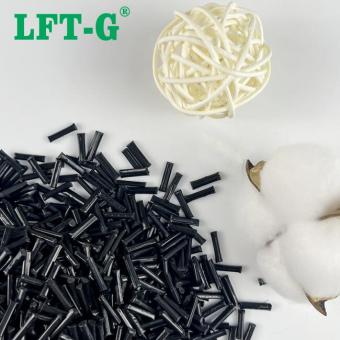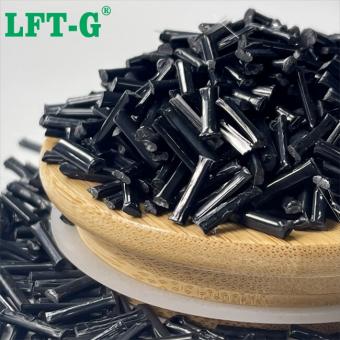Long carbon fiber is a new material with high strength and high modulus and excellent mechanical properties. It is a microcrystalline graphite material obtained by carbonization and graphitization of organic fibers. Its specific gravity is less than 1/4 of steel, and its strength is higher than that of steel. Corrosion resistant, high modulus, no melting. And a variety of resin substrates after impregnation extrusion molding into pellets, long carbon fiber polymer. Can be used for direct molding products. In recent years, it has been widely used in aerospace, mechanical and electronic chemicals.
-
Long Carbon Fiber Reinforced Composites Nylon 6 SeriesOur long carbon fiber reinforced PA6 material is a high-performance composite designed for demanding industries like automotive, electronics, and power tools.
- pa6 cf30
- plastic for tools
- carbon fiber filled composite
- black plastics
- advanced materials
- polyamide 6
Tags :
-
Nylon 6 Materials LFT Carbon Fiber Modified Polymer PelletsPA6 Long Carbon Fiber Reinforced Composite is a high-performance engineering material composed of a polyamide 6 (PA6) matrix reinforced with long carbon fibers. It delivers outstanding mechanical strength, rigidity, and fatigue resistance, while maintaining excellent dimensional stability and thermal performance.
- materials nylon
- pa cf filament
- pa plastic material
- different kinds of carbon fiber
- strength carbon fiber
- long fiber
Tags :
-
Advanced Materials Polypropylene Resin Long Carbon Fiber filled PelletsPP long carbon fiber reinforced material offers exceptional strength and lightweight properties, making it ideal for high-performance applications. Its superior rigidity and impact resistance enhance product durability and structural integrity. Widely used in automotive, drones, and industrial components, it ensures excellent mechanical performance.
- PP CF30
- Polypropylene granules manufacturer
- PP copolymer pellets
- copolymer vs homopolymer pp
- pp carbon fiber compound
- Carbon Fiber Reinforced Materials
Tags :
-
Advanced Materials PEEK Resin Long Carbon Fiber Reinforced PelletsPEEK long carbon fiber reinforced material provides exceptional thermal stability, outstanding chemical resistance, and superior mechanical properties, making it ideal for the most demanding engineering applications. With its high strength, rigidity, and low friction characteristics, this material is widely used in aerospace, automotive, and industrial sectors. Its ability to withstand extreme temperatures and harsh chemical environments ensures reliable performance and durability in critical applications.
- peek automotive industry
- uses of peek in automotive industry
- peek composite
- peek pellets
- carbon fiber reinforced peek market
- peek-cf
Tags :
-
PEEK Special Engineering Plastic Resin Carbon Fiber Reinforced CompoundsIt is highly resistant to chemicals and heat and capable of resisting submersion in liquids long-term. It also can generally be subjected to harsh operational environments. The mechanical properties of PEEK allow it to be used as reinforcement material in various scenarios.
- PEEK CF30
- peek plastic
- carbon fiber reinforced plastics
- thermoplastic PPS pellets
- special engineering use
- LFT granules
Tags :
-
PPS Engineering Plastic Resin Carbon Fiber Reinforced CompoundsPolyphenylenesulfide, is a thermoplastic special engineering plastic with excellent comprehensive properties. Its outstanding features are high temperature resistance, corrosion resistance and superior mechanical properties. The product will make a metallic sound when it is dropped to the ground.
- PPS CF30
- pps plastic
Tags :
-
PLA Plastic Resin with Fiber Reinforced Thermoplastic CompoundsIt takes less energy to produce PLA than petroleum-based thermoplastics, making it relatively eco-friendly. PLA is often regarded as being biodegradable.view more
-
High Tensile Strength Nylon 12 Carbon Filled Polymer PelletsA class of polymers known as engineering plastics has better mechanical and thermal characteristics than regular plastics. They are used in goods for the automotive, electrical, industrial, and domestic markets that need great performance and durability.view more
-
High Mechanical Properties Polyamide 66 PA Long Carbon Fiber Polymer PelletsNylon 6,6, also written as nylon 6-6, nylon 66, or nylon 6/6, is a more crystalline version of nylon 6. It is also referred to as polyamide 66 or PA 66. It has improved mechanical properties due to its more ordered molecular structure. Nylon 66 for machining has improved temperature resistance and lower rates of water absorption when compared to standard nylon 6.view more
-
High Mechanical Properties Nylon PA Long Carbon Fiber Polymer PelletsThe main advantages of nylon 6 are its stiffness and resistance to abrasion. Moreover, this material has excellent impact strength, wear resistance, and electrical insulating properties. Nylon 6 is a highly elastic and fatigue-resistant material, meaning it will return to its original proportions after being distorted by tension.view more
-
High Mechanical Properties PP Long Carbon Fiber Polymer PelletsPolypropylene, also known as PP or polypropene, is a polyolefin or saturated polymer. It is a low-density thermoplastic with good resistance to heat. Other characteristics of PP include: chemical resistance, elasticity, toughness, fatigue resistance, and electrical insulation capability.view more
-
Long Carbon Fiber Polypropylene Modified CompoundsPolypropylene, also known as PP or polypropene, is a polyolefin or saturated polymer. It is a low-density thermoplastic with good resistance to heat. Other characteristics of PP include: chemical resistance, elasticity, toughness, fatigue resistance, and electrical insulation capability.
- pp 30 cf
- lft materials
- difference between copolymer and homopolymer
- long-fiber thermoplastic composite solutions
- carbon thermoplastic
- automotive thermoplastic composites
Tags :

 e-mail
e-mail English
English français
français Deutsch
Deutsch русский
русский italiano
italiano español
español português
português العربية
العربية 日本語
日本語 한국의
한국의 中文
中文












